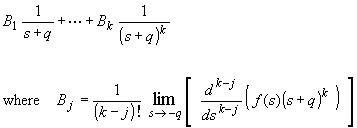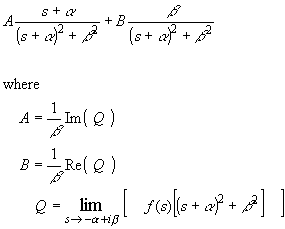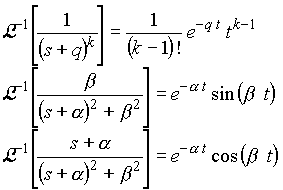
I. Important Properties of Laplace Transforms:


5. Second Shifting Theorem: Let f(t)=0 for t<0,
II. Solution of Linear Differential Equations:
Step 1: Find the roots of the denominator polynomial, say
- r1, ... , -rN
Step 2: Based on these roots separate num(s)/den(s) into partial
fractions.


Step 3. If needed, take the inverse Laplace transforms of each terms using the following formulas:
